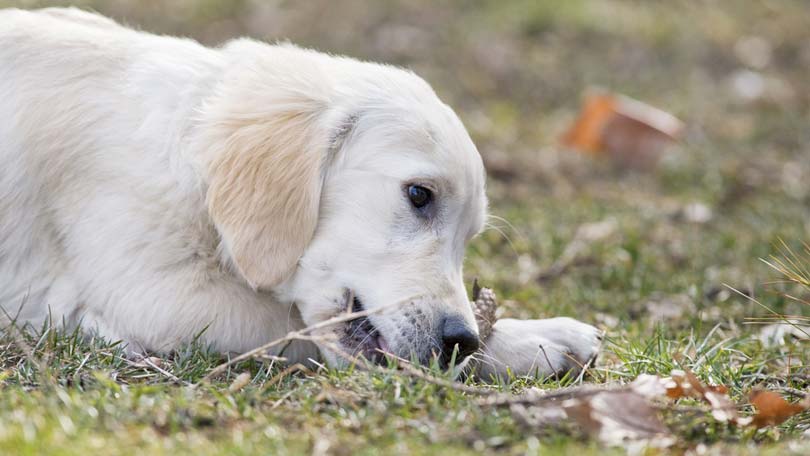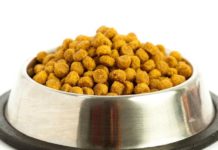
Dogs and bones seem like a natural combination. A dog will spends hours upon hours chewing on a bone, relishing each moment as if gnawing a bone is his ultimate purpose in life. Any dog owner who has witnessed a dog choking on a bone, or who has made an emergency trip to the veterinarian’s office because a piece of bone became lodged in their dog’s digestive system will remind you that not all bones are safe. Feeding dogs bones can provide numerous health benefits, but which bones should we be feeding, and which ones should be avoided?
A new feeding trend that is sweeping the dog world is the BARF diet, or biologically appropriate raw food diet. This diet takes a dog off of commercial pet food and puts him back on what is thought to be a dog’s original diet of raw meats and certain fruits and vegetables. Raw bones, such as chicken necks and wings, pork feet, and rabbit are given to dogs as a meal. Even supporters of this diet who use it on their own dogs will tell you that there is a chance that a dog may choke on a bone, or that a fragment may become lodged in the dog’s system. While dogs can and will choke on regular kibble, bones are obviously sharper; kibble can be digested whereas a bone may not be.
Rawhide bones, green dental bones, and even pig ears have all been causes of intestinal obstruction in dogs as well. Though manufacturers of green dental bones claim the product to be entirely digestible, intact bones have been excised from dog’s intestines and have even caused a few canine deaths. Rawhide bones present a multitude of hazards because not only are they slowly digested, but the soft stringy material of a chewed rawhide can become a choking hazard if swallowed. Because the rawhide becomes pliable, large pieces can be ingested (especially by an aggressive chewer), and will stall within the bowels, causing vomiting and diarrhea.
To be sure that you minimize the risk of your dog choking on a bone or swallowing a jagged piece that will lodge in his stomach, choose a sturdy bone based on the size and chewing ability of your pet. Marrow bones (found at any pet food store), are very thick bones with marrow in the middle, are quite sturdy, and will not splinter. Nylon bones are also known for their durability, and wear slowly so that the dog does not ingest too much nylon at once. Pieces of nylon are not sharp so if ingested there is very little chance of bowel perforation.
Benefits of Giving Your Dog a Bone
Safe bones are healthy for your dog and will satisfy his innate desire to chew. The chewing action of your dog will actually scrape plaque from the dog’s teeth, diminish bad breath, and stimulate the gums. Chewing helps reduce the risk of dental problems such as tooth decay. A real bone, such as a marrow bone, will provide calcium and other nutrients for your pet. Also, bones help to relieve anxiety, frustration, and boredom.
If you are concerned that a certain bone may cause your dog to choke, do not feed it to him. Although dogs love bones, it is not worth the risk of your pet’s life to give him something that you feel is possibly unsafe. If you are considering the BARF diet, know that there are substantial choking risks for your animal, so make sure to watch him eat each meal, and be aware of bowel movements to ensure proper digestion. Also, learn the canine Heimlich maneuver so that you are prepared for a choking emergency.
Opinions on feeding dogs bones differ between owners, breeders, and veterinarians. There is not one bone out there that is completely safe in any given circumstance. The key to choosing safe dog bones is to know your dog’s chewing behavior and strength. Supervise chew time, throw away bones that have become small enough to be swallowed, and do not trust the packaging of a bone even if it claims to be completely digestible. A good dog bone will thoroughly be enjoyed by your pet. A bad bone however, can be very dangerous, costly, and may cause much grief. Choose your bones carefully!





